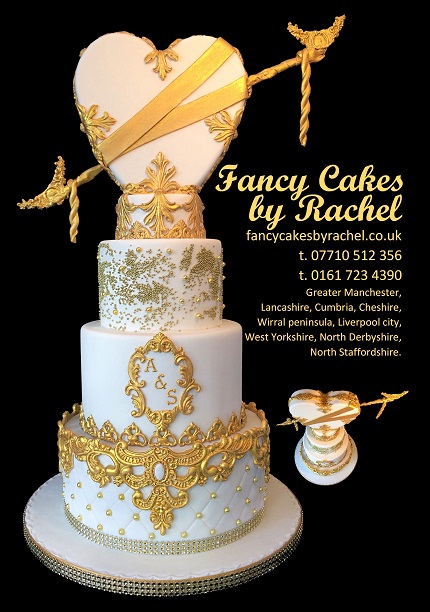In present-day times many weddings follow a generic style. But some traditions are still practiced or incorporated into the modern wedding.
Modern weddings almost always have a wedding cake, the cake can be in a variety of styles and flavours. There is also a cake for other wedding related ceremonies such as engagement cakes, mehndi cakes, nikkah cakes and first anniversary cakes.
Wedding traditions from around the world
Armenia
In Armenia the wedding reception is traditionally held in the groom’s house. When the bride and groom enter the house they break a plate for good luck then they are given lavash, a type of flatbread, and honey by the groom’s mother. They balance the lavash on their shoulders to protect them from evil spirits and eat the honey to bring them happiness.
China
China is a huge country and there are many traditions depending on which part of China the couple is from, here are just a few.
One Chinee tradition is where the groom, before the wedding ceremony, shoots his bride with a bow and arrow a few times. The arrowhead has been removed beforehand, obviously, he takes the arrows and, during the wedding ceremony, snaps them in half to symbolise their eternal love.
Another Chinese tradition is where the bride’s family arranges for a woman to accompany her to the groom’s house in a sedan chair which is elaborately decorated, this woman will bring the bride good luck. Further attendants shield the bride from view with parasols and they scatter rice over the chair. The rice is a symbol of health and prosperity.
The Tujia people of China cry for happiness. One month before the wedding the bride will start to cry for one hour every day, it is believed this is an expression of happiness. After ten days the bride’s mother will also cry with her and after a further ten days the grandmother will also begin to cry. Other female members of the family will then cry with them.
Another Chinese tradition is where the bridesmaids put the groom through a series of challenges to prove his worthiness. Afterwards he gives them money.
Congo
The bride and groom in the Congo are not allowed to smile and show their happiness throughout the ceremony and reception to show they are serious about their marriage. If they smile they are not serious about their union.
Canada
In Quebec, the French-speaking part of Canada, the unmarried siblings of the bride and groom perform a dance wearing brightly coloured socks. The wedding guests throw money at them, this money is collected and given to the bride and groom.
Czechia
Before the wedding ceremony, in Czechia, a baby is placed on the bed the couple will spend their first night as a married couple. This ensures their fertility. After the wedding ceremony the couple is showered with rice, peas and lentils also for fertility.
Fiji
In Fiji the groom must present the father of the bride with a whale’s tooth when he asks for her hand in marriage.
French Polynesia
After the wedding ceremony, on the Marquesas Islands, the bride’s relatives will lay down on the ground, side by side and the couple walks over them. The origin and symbolism of this tradition are not clear.
Germany
Wedding guests will throw porcelain on the ground after the ceremony to evade evil spirits and the bride and groom then work together to clear it all up. This is to symbolise that by working together they can overcome any challenge.
The couple is also presented with a log and saw and the couple saw the log in half. Again, showing their ability to overcome any challenge as a couple.
Greece
In Greece, the groom’s best man will shave the groom and his soon-to-be mother-in-law will feed him honey and almonds.
Guatemala
The groom’s parents traditionally host the wedding reception and when the couple arrives at the reception the groom’s mother will break a ceramic, bell-shaped jar. The jar contains grains such as rice or flour. This symbolises prosperity for the couple.

